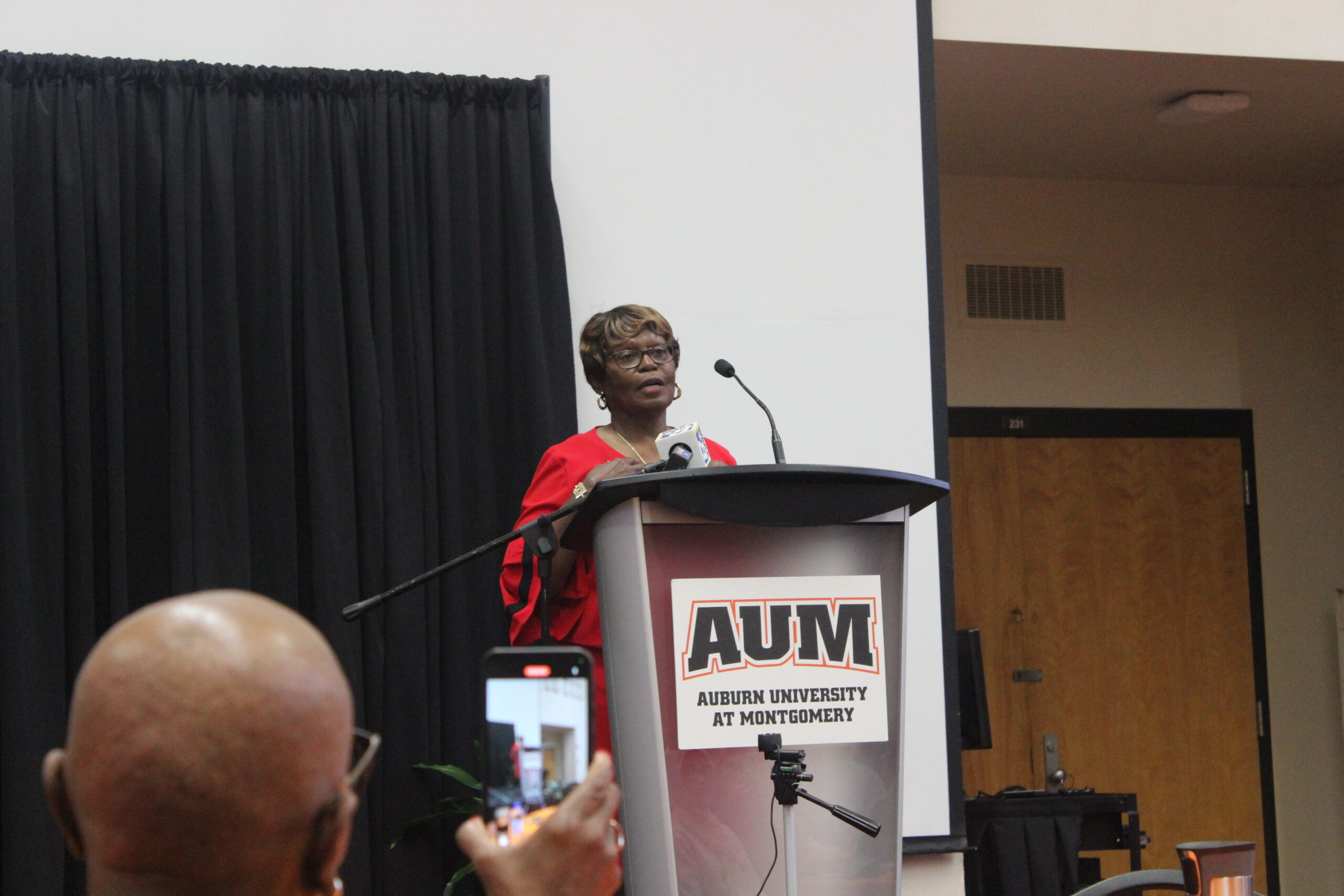Headshot of Auburn University at Montgomery’s photographer of 36 years, Frank Williams. Photo Courtesy of AUM’s website.
By: Tasker Wheeler
Not a day goes by that is not captured by a photo. A photo locked in time, a memory
created through millions of pixels and one click. Pure talent, nurtured by patience and practice,
is required for this reputable position. A photography position managed by one mega mind, one
kind, and one selfless person. Pictures are edited and produced by Frank Williams at Auburn
University at Montgomery and have been since November 1988.
Photography within the 20th century has been extremely successful within colleges and
universities in the United States of America, According to AU photo you can hire an individual
photographer to take images and document your event to create lifelong memories with
friends, family, and people you may care about. These events could be at sporting games,
graduation, on campus festivities, fraternity, and sorority, and first and last days of college.
These photos capture lifelong memories that will hold onto people for the rest of their lives
because images have the power to bring smiles to people’s faces.
The Valdosta, Ga native previously worked for newspapers located in homasville, GA,
Hammond, LA, Valdosta, Ga, and Montgomery, AL before becoming the University of Auburn at
Montgomery’s University Photographer.
Williams talks about how he originally got into photography. He began taking pictures in
his sophomore year of college. Williams and his friend decided to start in a dark room in his
friend’s dad’s utility room at his parents’ house and previously to this all happening Williams
had gotten a camera when he was a freshman for Christmas, and he really liked it and found joy
in taking pictures. So, he and his friend decided to start developing black and white and taking
pictures with black and white images to print those pictures.
Williams spoke about how much photography has changed and evolved since his time in
college. He said, “throughout the years it didn’t evolve much at all for me until around 2003 and
then it went digital. During the summer of 2003, I was still developing black and white pictures
the same way that Kodak had been developing those pictures 100 years prior to that and I was
shooting a lot of slide film “Ekta chrome”, for color and my supervisor at the time thought
about us going to medium format from 35mm. So, while we were in the idea of looking for a
larger format, he said take a look at digital photography and that was when someone
introduced me to Nikon’s brand new D100 digital camera which was a 6.1 megapixel, which at
the time was the largest megapixel camera on the market.” From that moment onward
Williams never turned back, his photography changed forever not only due to the size of the
images but also the quality of the images.
In an article by Imaging Resource, there was a review on the Nikon D1000. Providing an
in depth analysis as the camera has a feature called super zoom which allows images to be very
high pixelated and easy to capture.
Ironically enough, Williams did not obtain a degree in photography because it wasn’t
offered, rather he obtained a degree in marketing and management at Valdosta State
University, which opened multiple opportunities for him. He pursued photography as a hobby.
The infamous question surrounding photography is whether it is seen as a hobby or
work. When Williams is away from AUM duties, he doesn’t take many pictures, but whenever a
scenic view arises, he will take a photograph with his iPhone. With all this being said, he views
life photographically.
Williams also highlighted that he only used to only upload JPEG images but in 2010 he
began to upload ‘raw images’ through a software that he uses. From there he edits them, to
make them lighter or darker. Next step is to dodge or burn them just a little, using the cropping
tool where he still can make these images into JPEGs to send off through emails. It is just
another technique that he added to his talent toolbox which made his pictures that much
clearer and better to view.
To an article by Susie Linfield featured by Boston Review, titled the uses and abuses of
photojournalism, captured what could be seen as the negative side of photography revolting.
Photography is seen differently by every lens and including the human eye. Although Williams
was encouraging with his time in photography, there is always going to be a negative to every
job description, and that negative being skepticism and criticism of photos you may take. His
goal every single day was to capture video and photo to encourage those to attend events and
to share with others.
Some of Williams’ favorite memories at Auburn University at Montgomery include
February 1989, which was the first AUM Homecoming, where he attended to take pictures for
the time capsule of memories. He also mentioned another event that included a bonfire on
campus, around the northside near college of business parking lot. Heather Whitestone who
was the reigning miss Alabama at the time in 1995 was a vivid memory for Williams when she
visited campus. Another memory that stuck in William’s memories was in 2005, when President
George W. Bush came on campus and packed out the gymnasium, to speak on the subject of,
social security. He then spoke about athletics that happen on AUM’s campus, mentioning, the
men’s basketball team. They were coached by Larry Chapman at the time of the recollection of
a specific memory, and they were playing number one seed Polytechnic. The Warhawks fought
until the very end which resulted in a huge win. Williams has been around for some of Auburn
University at Montgomery coolest events and has been there to capture those moments
through his eyes and through his camera lens to share memories with me and others.
The New York Times licensing photojournalism throughout the world in the modern era
allows photographs to tell a story without using words. This relates heavily on the role Williams has played during his time at AUM.




